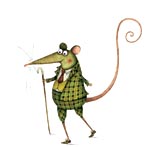Country mouse loves seeing heather
Mark loves seeing the heather this time of year


Few sights gladden the heart more than that of heather in full bloom. I think it looks prettiest on the North Yorkshire moors set against emerald pastureland. Left to nature and its own devices, heather becomes less showy and more straggly. It is only as a result of human activity—the clearing of trees on the poor acidic soil followed by grazing animals or fire—that its full beauty is revealed, which is why the best of the heather is found on grouse moors.
Once the trees were cleared, the heather was locally used by humans as fuel, fodder and a building material. It must have been a harsh existence. Its roots were carved into knife handles for the Scottish dirk and its sweet-scented flowers have been used as an orange dye and for making beer (leann fraoich), once the staple drink of the Highlands. It was also used for what can only have been extremely uncomfortable bedding material.
Today, most of the heather heaths of southern Britain have disappeared, but there are some places in Hampshire and the West Country where it flourishes. There are a still few grouse on Dartmoor and, elsewhere, the rare Dartford warbler and smooth snake cling to existence.
** This article was first published in Country Life Magazine on September 3 2014
* Follow Country Life on Twitter
Exquisite houses, the beauty of Nature, and how to get the most from your life, straight to your inbox.
Mark grew up in the Cotswolds and began his career as a gold prospector. He became editor-in-chief of Country Life in 2006, having previously been in charge of more than 50 magazines, including Horse & Hound. He attributes his success to David Bowie and fly-fishing.
-
 Child stars, Prince and nursery rhymes: It's the Country Life Quiz of the Day, December 5, 2025
Child stars, Prince and nursery rhymes: It's the Country Life Quiz of the Day, December 5, 2025It's all in today's quiz.
-
 ‘Calf’s brains have a bland, gentle richness that soothes and cossets': Tom Parker Bowles on the joys of eating offal
‘Calf’s brains have a bland, gentle richness that soothes and cossets': Tom Parker Bowles on the joys of eating offalEating offal it is more sinned against than sinning, but it offers the ultimate in magnificent, fully immersive eating.
